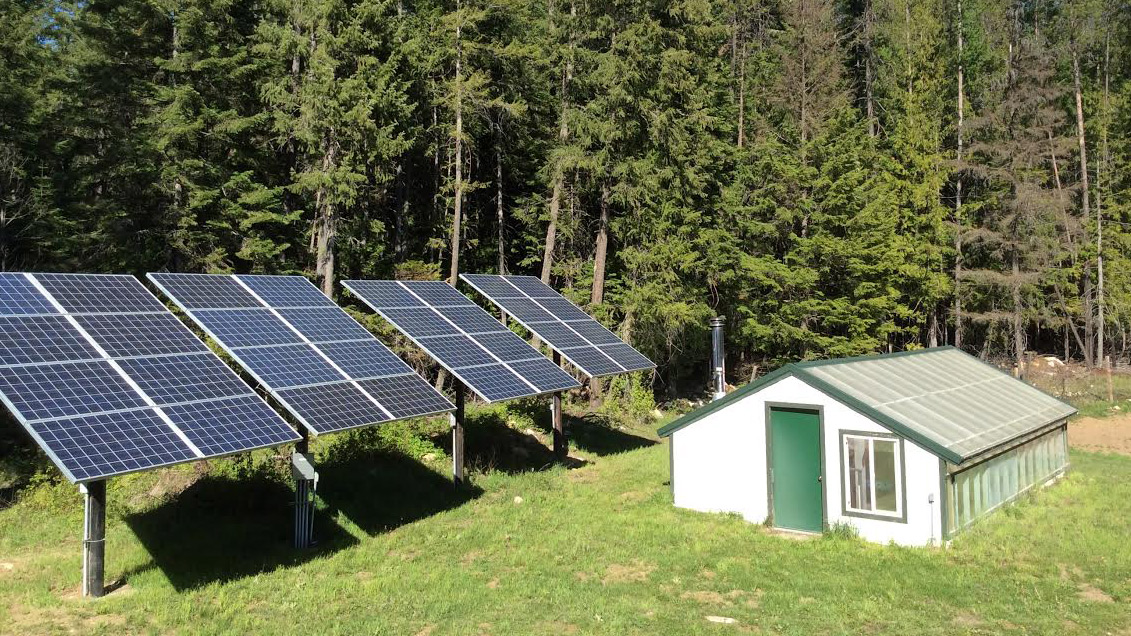Email a copy of 'Letter Re: Plan “B” Power' to a friend
8 Comments
- Ad The Good News About Nuclear Destruction.The lethality of all nukes can be reduced by 90% when you know beforehand what to do and not do.
- Ad Barter and Sell at Simcour Trading PostA new site for individuals to barter and sell items of interest to other like-minded individuals


Most small generators with DC outputs are designed to charge one small battery, and hence they only put out eight or twelve amps. A better option for a solar battery bank would be to put in a dedicated battery charger that would be run by the AC output of the generator. Many of the dedicated off-grid inverters have this built in, otherwise look for an IOTA Engineering DL series charger. They are available in 12, 24, or 48 volts, and in a couple of different output ranges up to 90 Amps. These can be setup to fully charge the batteries without overcharging concerns, thus protecting your battery investment. https://www.amazon.com/DLS-55-AUTOMATIC-BATTERY-CHARGER-SUPPLY/dp/B0074JVO0A/ref=sr_1_1?ie=UTF8&qid=1502368968&sr=8-1&keywords=iota+charger
I second this comment on an AC battery charger.
Pay attention to the type of battery. AGM and old-fashioned lead acid batteries have different charge settings. The charger should have a selector. (And don’t get gel cells. They are WAY too subject to overcharging and damage – and they need a 3rd voltage setting. (AGMs don’t leak, so they are great for boats/off-road. Probably overkill for residential.)
As for batteries in a solar setup. Iron Edison are crazy expensive, but taken care of, they should last AT LEAST 20 years. (I’ve been told at that point you can drain them, add new electrolyte and start the clock again.)
Failing that Trojan makes good batteries even if you stick with the golf-car/6-volt batteries. (If you are buy a lot of batteries, it pays to find your regional distributor and go get them yourself. Markup can be killer in retail.) Even babysitting them, they won’t last forever.
The other thing to do is install an automatic watering system for keeping the batteries filled with distilled water. Especially true if you intend to ignore them for long periods. Or maybe especially if your charge has a desulfation mode.
A couple thoughts, assuming maybe some Harbor Freight type panels.
If you don’t use a charge controller the panels will probably draw current from the batteries during the night. Even the cheap charge controllers you can get at Harbor Freight will prevent that.
On a low budget setup, it would probably suffice to buy a 10-15 amp battery charger and run that off the generator, just make sure it switches to trickle charging when the battery gets fully charged.
I use my Honda EU2000i to run my Craftsman battery charger to charge the batteries. 12Vdc deep cycle RV type batteries (4 ea) and let the charger do the computing and work. I don’t rely on solar panels due to our location in north latitude. They help supplement our needs, but in winter they aren’t fully reliable due to the lack of sunlight.
I have a single 100 watt solar panel and two 12 volt deep cycle batteries in my motor home. I use them in all weather conditions and even sometimes having to park in the shade. The trick is to monitor/control your usage. I do have a 4KW generator in the motor home but so far have not used it and didn’t use the one in my previous motor home either. I also truly wish people who park near me wouldn’t use their damned generators either.
SO again, the trick is to monitor and control your usage and stop using them when the battery level approaches 50% charge.
According to the EU2000i repair manual the DC voltage based on current draw is:
0 A – 26.5 V
1 A – 22.5 V
2 A – 20 V
3 A – 18.5 V
4 A – 17 V
5 A – 15.8 V
6 A – 14.8 V
7 A – 13.8 V
8 A – 13 V
I own one of these and would not use the DC output except as an emergency battery charger, and even then would monitor the battery voltage to prevent damage from over voltage. Far better would be to use the AC output to drive a quality battery charger.
Here is a guy that has all the no BS info you need for an off grid package….https://handybobsolar.wordpress.com/.
I supplement the same setup with a converter used in RV installations. Use the ac side of the Honda EU. This way you get the stepped charge voltages charging the batteries, not raw unregulated D.C. From the Hondas dc side.